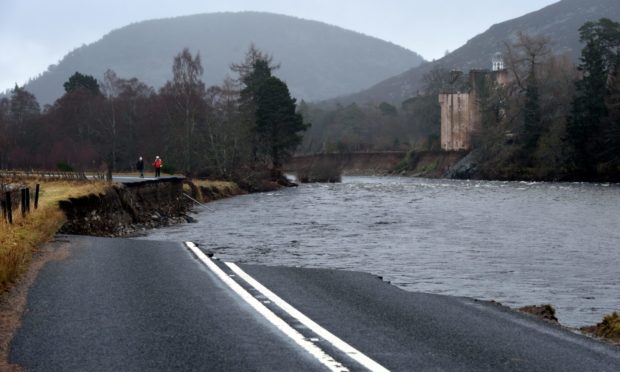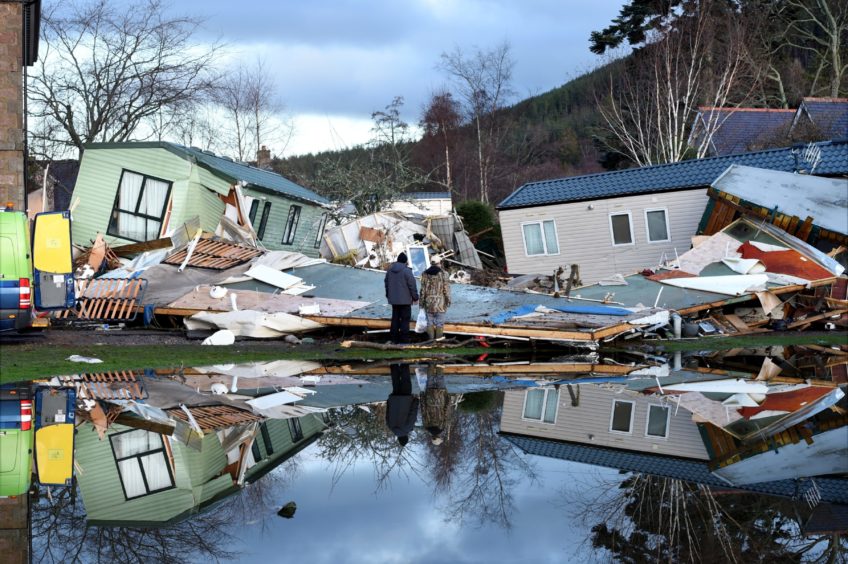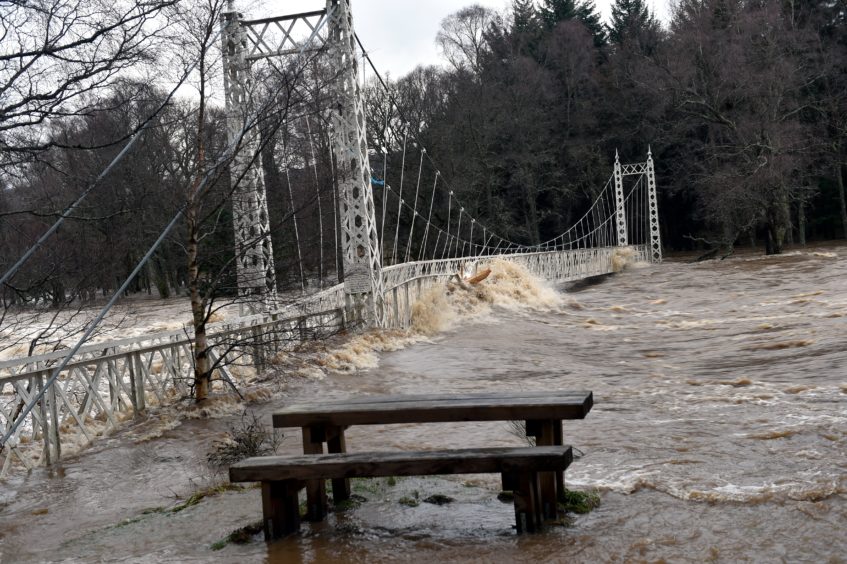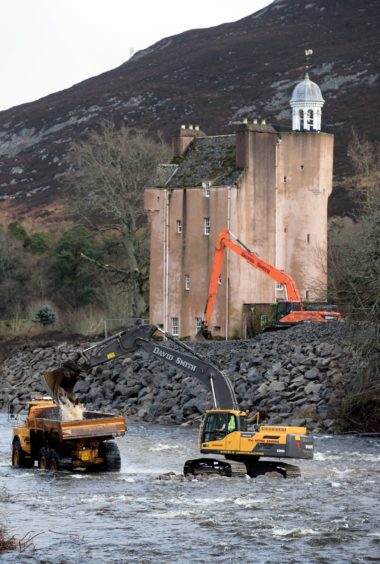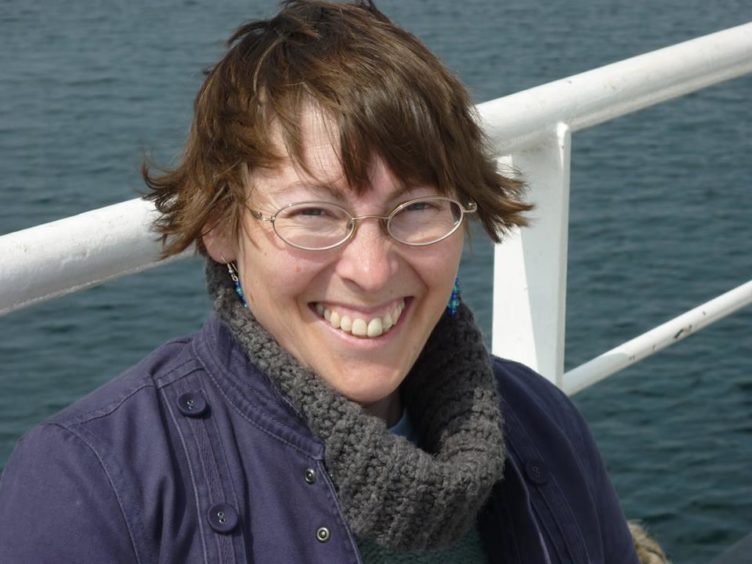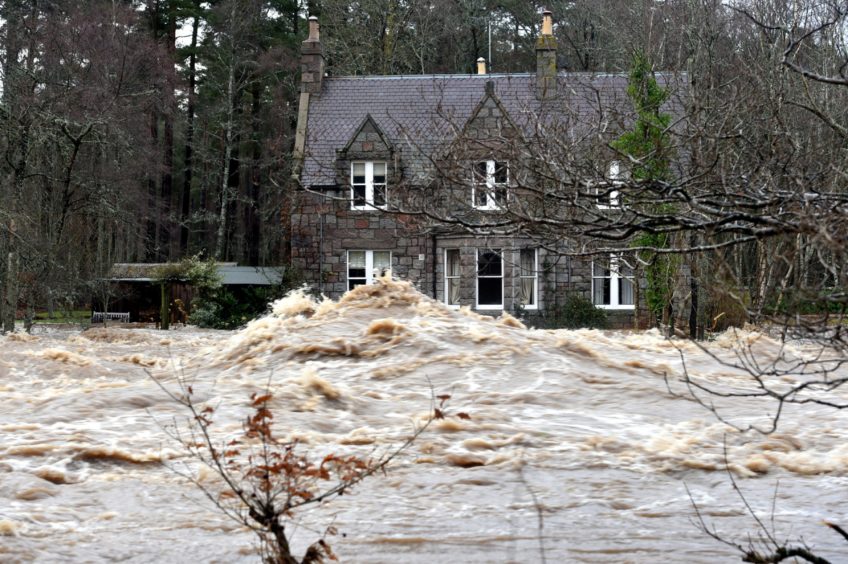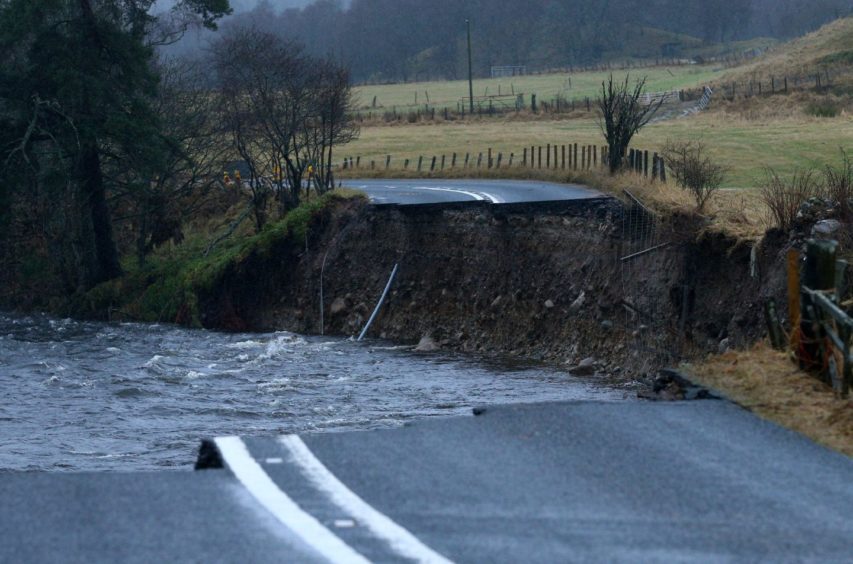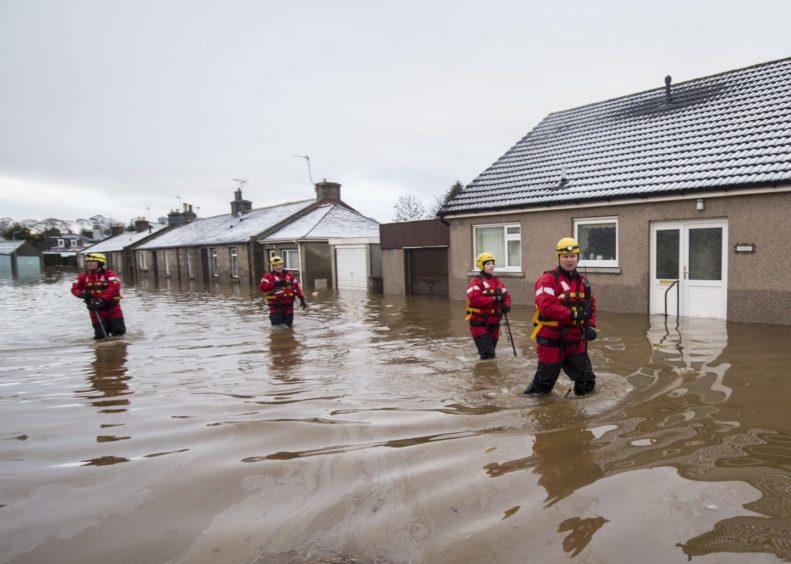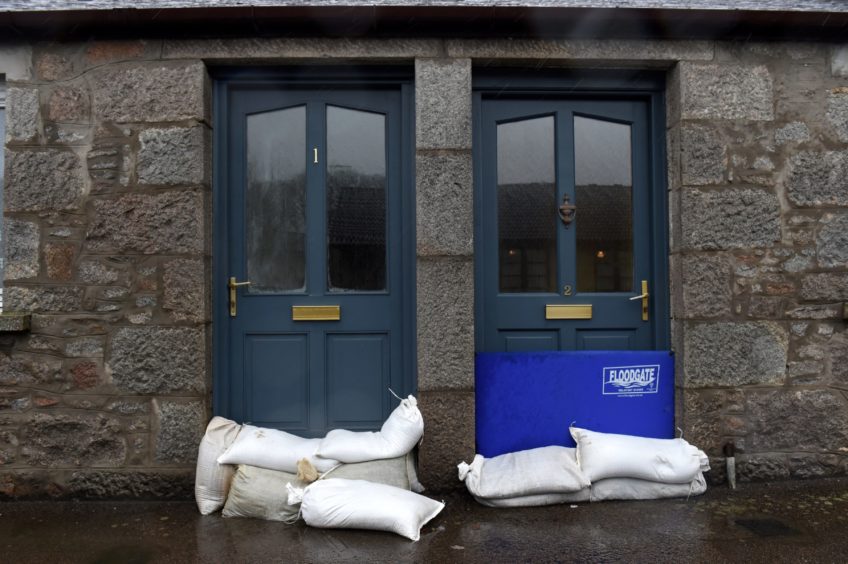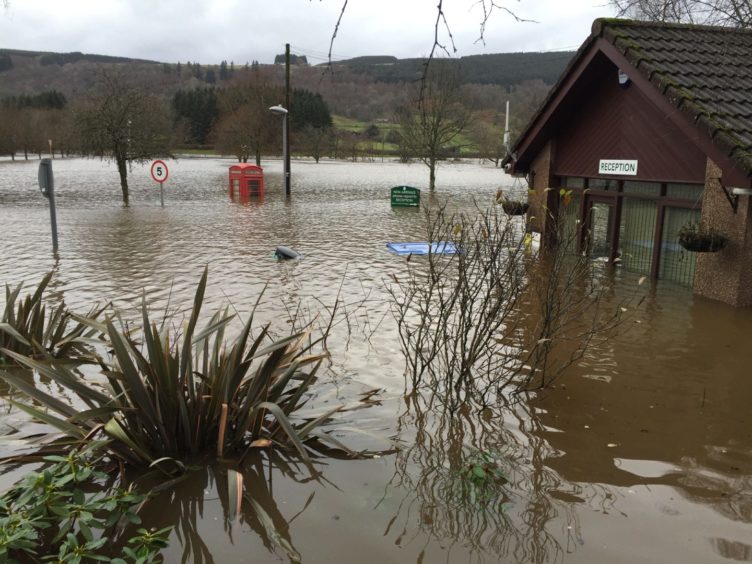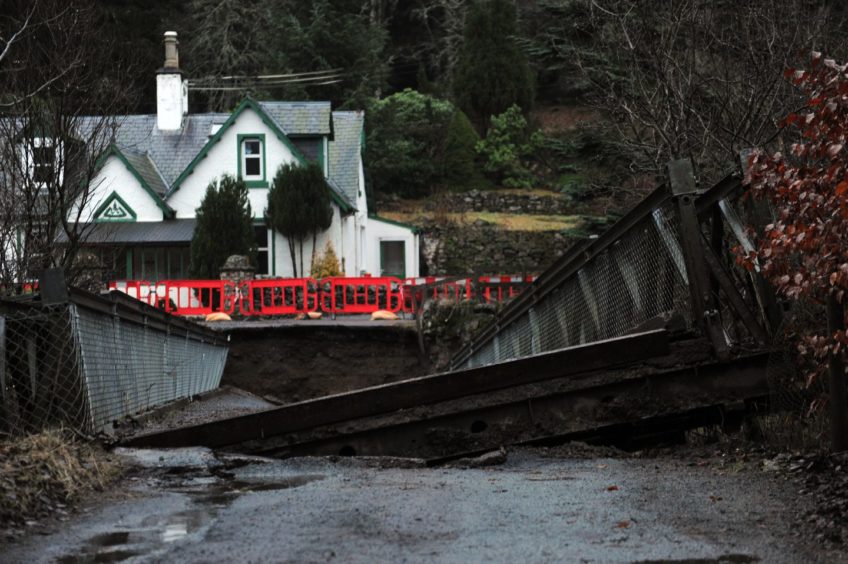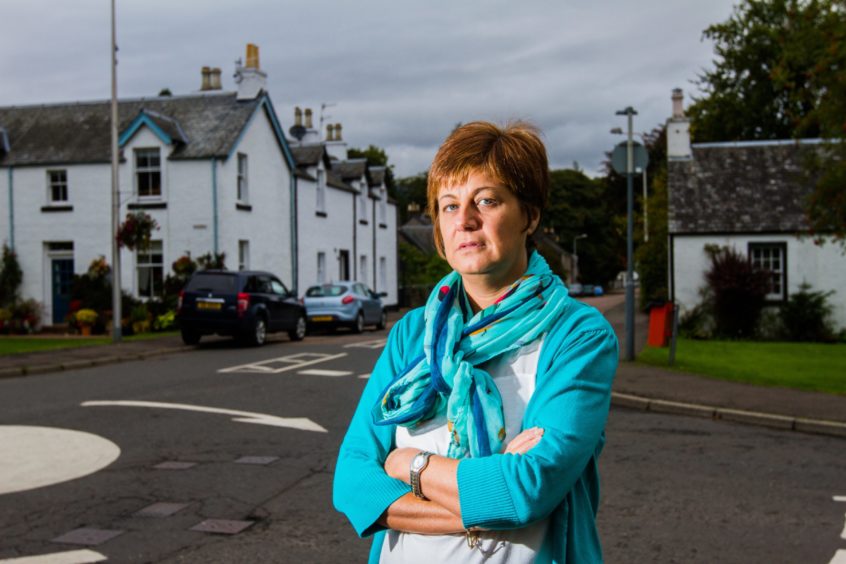It’s five years since Storm Frank ripped through Scotland, wreaking a trail of destruction across the country. Gayle Ritchie looks back at one of the worst weather events in recent history.
Storm Frank swept through Scotland on December 30 2015, bringing flooding that devastated homes and businesses.
Worst-hit towns and villages included Ballater and Inverurie in Aberdeenshire and parts of Perthshire and Angus.
Static caravans at Ballater Caravan Park were seen floating down the raging River Dee as flood waters tore through the site and left it looking like a “war zone”.
Near Balmoral, 16th Century Abergeldie Castle teetered on the brink of collapse while the iconic suspension bridge at Cambus O’May was battered and buckled.
Experts labelled the 2015-16 winter flooding as the most extreme on UK records, with December said to be the wettest and the warmest the country had ever seen.
Impact on Ballater
Non-stop rain landing on already wet ground, coupled with melting snow in the mountains, caused the River Dee to surge and burst its banks at Ballater Golf Club.
Its waters began spilling out into the streets, into garages, sheds and living rooms, and residents were evacuated to local safe havens.
Soon, much of the village lay submerged in 4ft of water with the Dee flooding Bridge Street.
Static caravans at Ballater Caravan Park floated down the raging river and flood waters wrecked the site completely.
Around 100 caravans had been housed at the site when the floods swept in, 40 of which ended up missing. Many others were left beyond repair and had to be demolished.
Some 600 homes and 100 businesses were estimated to have flooded across Aberdeenshire in the days following Storm Frank – 307 homes and 60 businesses in Ballater alone.
Part of the A93 Ballater to Braemar road – across the road from the castle – was sent plunging into the Dee as the region was battered by the elements.
The roaring waters of the river also partly destroyed the Invercauld Bridge, the main crossing on the road into Braemar.
Nearby, the iconic Edwardian Cambus O’ May suspension bridge was severely buckled and battered by the storm.
Meanwhile, Abergeldie Castle near Balmoral was left teetering on the brink of collapse.
The Baron of Abergeldie, John Gordon, and his wife sought refuge at a neighbour’s house after a 500-yard stretch of embankment next to the castle was swallowed up by the swollen Dee.
Tonnes of rock were placed on the wrecked riverbank in an attempt to save the A-listed tower from destruction.
‘The knock-on effect can still be felt’
Reverend Canon Vittoria Hancock was at the heart of the action when Storm Frank hit Ballater.
“The village had had almost continuous rain for three months, plus snow melt, plus Storm Frank,” she said.
“Many of those who weren’t flooded ended up hosting family and friends for lengths of time, or volunteering, or clearing things out.
“I was able to help by being present – going with people into their homes after the flooding, being a listening ear, finding practical help where I could.
“The churches ran a free soup kitchen for a few weeks and this provided a valuable decompression space.”
The worst aspect of it all, apart from the fact many people found themselves homeless, was the fear factor.
“It kept on raining and the river kept rising,” said Rev Hancock.
“People think of it as one event, but the flooding happened at different times over the next week, too.
“One evening I had a frantic phone call from Tarland to tell me that water was coming in and did I know anywhere with sand bags. I also had people affected later in Aboyne.
“The whole community was affected, even those who weren’t flooded, and the knock-on effect can still be felt.”
Storm Frank was both financially and emotionally devastating, said Rev Hancock.
“The effects are still seen today. I’m not sure we have recovered fully yet.
“A lot of people were deeply traumatised and they still are to a degree.
“You can feel the tension in the community rise with the river level.”
Many other parts of Aberdeenshire suffered the wrath of Storm Frank
On January 7 2016, the rivers Don and Ythan burst their banks, affecting 130 homes and 16 businesses in Inverurie, Port Elphinstone and Kintore, and a further 64 homes and three businesses in Ellon.
Several householders in Port Elphinstone were forced to leave their homes after water started coming up through their floorboards.
Steve Russell’s house, right next to the River Don, was flooded by 4ft of water.
“We’d only been in the house a year and we felt pretty safe, having been told it hadn’t flooded in 120 years,” he said.
“My wife and I started to get nervous when the Don started rising and hunted down sandbags, which were like hen’s teeth.
“The football pitch opposite the house flooded – it was like a pond – and then we had a power cut.
“We packed the car and headed to the Strathburn Hotel in Inverurie where staff offered hot drinks and a dry space. We slept in the main lobby with around 30 other ‘abandoned’ people.”
The following morning Steve discovered the flood waters had breached his house.
“Seeing that was incredibly emotional,” he said.
“The water had made a whirlpool of shelving, lawn mowers and electric goods in the garage.
“The flooring and sun patio were ruined and there were scum lines on the walls.
“We were genuinely devastated. It was absolute carnage.”
It took months, and vast sums of money, to repair the damage caused, and even now, five years on, Steve says the threat of another Storm Frank hangs over him.
“Our house is at risk and every time it rains, we get anxious,” he said.
We were genuinely devastated. It was absolute carnage.”
Steve Russell
“Farming procedures have changed – there are less natural barriers to control mass water flow – and I expect us to flood again.
“I can only cross my fingers and hope we’re not so badly affected.”
Tayside trauma
Perthshire and Angus were among the hardest hit areas in Tayside, with parts of Strathearn completely submerged.
Homes in Comrie and Coupar Angus were evacuated as Storm Frank battered the region, cutting power and flooding homes.
In Perth, the gates were closed at Perth Harbour and on the Queen’s Bridge as water levels on the River Tay rose.
North of Bridge of Cally on the A93, the Bleaton Hallett bridge collapsed seconds after a digger driver drove his 14-tonne vehicle on to it during the flooding on December 30 2015.
Rodger Brown was forced to use his vehicle’s rear bucket to pull the digger back on to solid land before the bridge gave way completely.
The 34-year-old from Blairgowrie had been helping to stop flood water from entering a nearby property just before the drama unfolded.
Some of the worst hit roads were around Tannadice, Marykirk and Montrose in Angus.
In Blairgowrie, a Coastguard helicopter and specialist firefighters rescued an elderly couple from their home which was in danger of being flooded.
The aircraft was scrambled to Boglie Farm to save the couple who had raised the alarm after waking to find their home cut off.
The man, who was confined to a wheelchair, was airlifted to a neighbour’s house on higher ground with his wife and their dogs.
Gillian Brock, vice-chair of Comrie Community Council, belted home from work after hearing about the flood risk.
“I waded through more than two feet of water to check my home,” she said.
“Thankfully it was okay but sadly others weren’t so lucky.
“When I realised the extent of the devastation I told work I wouldn’t be back and helped to rescue residents.
“We went round the shops in the village asking for food and donations and opened the White Church as a volunteer rescue centre.”
Gillian said volunteers galore turned up with food or simply willing to help.
“I got one resident to eventually leave his home after I persuaded the rescue services to take his dog on a dingy,” she said.
“I also got someone to inspect a property to make sure it was safe as the lady refused to leave her property.”
Gillian believed she and others did the “best they could” in an emergency situation.
“We were devastated at what this disaster had done to our community but, Comrie being Comrie, it did everything in its power to help and, to this day, we still fight to get the resilience plan in place so our residents can rest assured this won’t happen again.”
Human cost of havoc
Storm Frank brought severe gales to western parts of the UK, with gusts as high as 85mph in northwest Scotland, and persistent, heavy rainfall.
Amber “be prepared” rainfall warnings, meaning “danger to life,” were issued because of severe flooding reported in England and Scotland.
The storm claimed three casualties across Moray, the Highlands and Cornwall.
A 36-year-old man died after falling out of a canoe in the River Garry, near the village of Invergarry.
The body of a missing kayaker in his 50s was recovered from the River Findhorn in Moray. He had capsized from his vessel while navigating rapid torrents.
A grandfather became the third victim of Storm Frank when he drowned after being overpowered by stormy seas off the coast of Cornwall.
The man reportedly died while trying to rescue his dog after it got into difficulty at Port Mellon, near Mevagissey.
